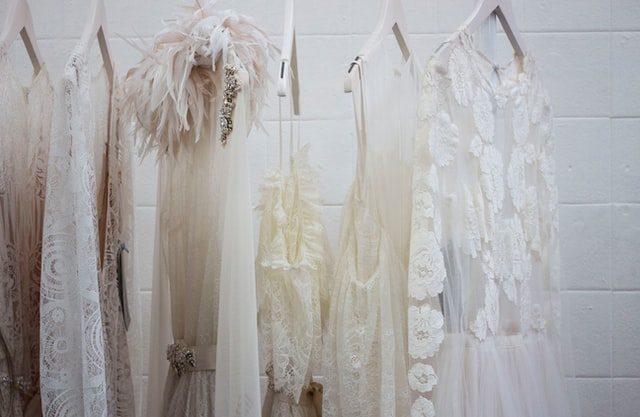Last weekend, while getting dressed for a party, I couldn’t find one proper outfit to wear despite my cupboard overflowing with all kinds of clothes. I have worn those dresses once or twice, but I did not want to repeat them anymore. And the guilt of overconsumption holds me back from throwing them away. Then I wondered if there was a way by which I could have access to unlimited clothes without going through the trouble of owning and storing them.
What if I tell you that there is a pocket and environment-friendly solution for your “nothing to wear” problem. Yes, you heard it right.
Style Theory, a Singapore-based startup similar to Netflix’s subscription-based business model and varied selection of shows, gives users monthly access to an unlimited closet of designer apparel at a fraction of the retail price.
Every year, over 350,000 tonnes of used clothing are disposed of in landfills in the United Kingdom, and approximately 30% of clothes in wardrobes have not been worn for at least a year. Overconsumption and the inexorable disposal of undesired garments have become a global concern – and many of these garments are thrown away unintentionally.
What is Style Theory? And how did it all start?
Style Theory is a fashion rental platform based in Singapore that allows customers to borrow an unlimited number of things for a monthly price. The user can rent three designer clothing and exchange them during the membership period. This story will detail the business model of Style Theory.
The company delivers new sets three days after they are placed for exchange. The company provides free two-way shipping. Users can save time and money while still being able to refresh their outfits.
The SoftBank-backed startup now has over 200,000 registered customers across Singapore and Indonesia, with 50,000 clothing and 2,000 bags in its inventory.
Raena Lim and Chris Halim started Style Theory in 2016. Lim, an ex-Goldman Sachs banker, and her consultant husband Halim founded the company due to a frequent problem: having nothing to wear.
“The ‘aha’ moment came when Chris actually questioned me, and he’s like, ‘why is it you have so many clothes, and you’re always complaining that you have nothing to wear?’
Raena Lim, COO of Style Theory to CNBC
Lim wanted to launch a project that allowed her to do good after spending her early career working for a non-profit in Kenya. The opportunity was evident, particularly with the environmental devastation caused by quick fashion coming to light.
Textile manufacturing is one of the world’s most polluting industries, emitting 1.2 billion tonnes of carbon dioxide per year, more than all international flights and shipping together.
How Style Theory’s business model solved the problem of “Too many clothes, but nothing to wear” in a sustainable way
Test – first strategy
The circular fashion business, launched in 2009 by Rent The Runway in the United States, has grown in popularity over the last decade, inspiring brands like My Wardrobe HQ in the United Kingdom and GlamCorner in Australia.
However, Southeast Asia’s logistical obstacles made it a difficult market to break into. As a result, inexperienced entrepreneurs Lim and Halim decided to test their ideas first.
At first, Halim and Lim only served a small number of customers. Users would borrow luxury products in exchange for a flat membership fee. The founders raised membership and inventory as demand grew.
“The best way to launch anything is always do it simply with minimal scope, get it to market ASAP, then get customers’ feedback. Based on customers’ feedback, you can then iterate and make it better. I think that’s a much better way to build something that customers will love.”
Raena Lim, COO of Style Theory to MoneyControl.com
Data-driven approach
Data have also boosted Style Theory business model’s success. The Style Theory app, which has made significant investments in product and innovation, uses machine-learning algorithms to gather users’ browsing and rent histories to provide a simple and personalized buying experience.
Style Theory also uses this information to find new inventory from businesses and consignors, resulting in a steady flow of over 2,000 authenticated bags to pick from. To mitigate the consequences of the fashion industry’s overproduction, this ultimately extends the lifecycle of each item.
Active engagement with the community
Style Theory has had a good impact on the lives of many women in its three years in operation.
Its retail store is a way for it to keep in touch with its existing subscribers while also reaching out to potential new ones, especially those who aren’t able to access it through internet means. Subscribers can enjoy unique member events like perfume launches and fitness workshops inside the store, acting as a community space.
Strong support system
Style Theory is viral among tech titans such as Google, Facebook, and LinkedIn, routinely inviting them to speak. Some of its members who work as marketing gurus provide their services for free, even spending half a day to offer better ideas and professional inputs.
Finding others who are like-minded and passionate about this [sustainable] cause might go a long way toward forming a movement.
How does Style Theory Work?
In 2019, the global online clothing rental market was valued at $1.2 billion. That amount is predicted to more than double to $2.8 billion by 2027. Much of that expansion could come from Asia-Pacific, where the relatively undeveloped clothes rental business is ready for disruption.
Within six years, the region is expected to account for over a quarter (22.14 percent) of the global market, according to market research firm Research Nester.
Style Theory, which companies like Uber and Airbnb inspired, has changed people’s perceptions of the sharing economy. It expands people’s choices without requiring them to make a financial commitment.
The collection was built by the team “making pitches from morning to night; all the way to New York from Australia’s time zone.” It has already established a good reputation, and brands now approach them with their brand visions and collections.
For its apparel subscription, it works directly with designers who sell their garments at lower prices — even for the most recent seasons seen at multiple outlets. In exchange, Style Theory provides them with information on the client profiles who rent their outfits and vital fabrication recommendations.
“Through our platform, we are able to understand how well a fabric can withstand the effects of rental. We can personally tell the brand that this fabric can sustain through dry cleaning, even after 60 times of wash. They are excited to contribute sustainably and learn how to produce better”.
~ Raena Lim, COO of Style Theory
On the other hand, its bag subscription provides people authority by allowing investment bags to be consigned. They split the profits with Style Theory, allowing them to earn passive income.
Style Theory has different subscription plans (Starter, Basic, Unlimited, and Pro) depending on the customer’s needs starting from $59/month and reaching up to $179/month. The revenue for the Calendar Year 2019 was USD 5.47 million, up from USD 3.63 million in the previous year.

They’re fixing an issue for users, but they’re also providing answers for suppliers or designers who want to reach out to their target market directly.
What is the latest in Style Theory and future plans?
Style Theory also recently opened a permanent retail location in 313 Somerset, an intriguing decision for a tech-focused firm. Large floral arrangements, fitting rooms with encouraging statements, and life-sized art exhibits are featured in the store, an experience destination for both new and existing subscribers.
It features around 300 clothing items and 30 bags on display and serves as collecting and return location for swaps. These will be rotated based on client demand and the possibility of future designer collaborations. The new store also offers complimentary sixty-minute style sessions with experienced image advisers for those new to the brand.
Style Theory is further prepared to handle and hold every single bag to the highest quality, ensuring that the state of the used items remains as good as new for thousands of users, thanks to the development of in-house authentication and leather care skills in their facility.
They just launched “Style Theory Share,” a new program for the Singapore market in which they bring high-quality clothing from customers’ closets to their website and share profit with them. As a result, they’re renting garments from customers and designers.
The company delivers a client experience unequaled by other sustainable fashion brands in the area because of its holistic strategy and a future warehouse in Hong Kong.
Be human. Be well. Be planet. Lululemon’s Sustainability Strategy
Conclusion
Fashion, for many women, entails more than just the things they wear. It expresses their ingenuity and represents their actual self. High-end fashion is not affordable and attainable for everyone. However, every woman should be able to experiment with her style without being restricted.
As we make significant progress towards abolishing today’s buy-and-throw-away mentality, Style Theory is redefining the future of fashion — one in which consumers believe that renting is similar to, if not better than, buying.

















